
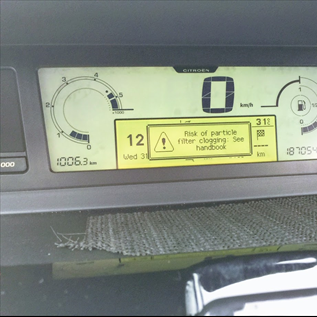
The car involved is a Citroen C4 Picasso 1,6 HDI MY 2012 and with 1st. owner. The car's mileage is about 185 000 km.
A shorter version of the text:
In July 2018 (164 000 km) the fault code "FAP filter saturated - P1490" appeared for the first time. Diagnostics in an authorized workshop didn't reveal any problems. The same fault code appeared some later. For testing purposes, a different FAP filter was installed with the fault code still appearing. vyskočila. The fault code activated intermittently where the range could be 100 km, 500 km or even 2 000 km!
In September 2018 (170 000 km) DTC P1490 activated and the SERVICE light turned On very frequently. The car was sent to an authorized workshop for repairs. The workshop quoted that the front side of the FAP filter is blocked despite the fact that differential pressure sensor values are OK and the FAP filter saturation level is at 23%?! The workshop recommended the FAP filter replacement. The owner argued with the workshop that the values indicate that the filter is not saturated. Nevertheless, a new FAP filter was installed. After about 2 000 km the DTC P1490 appeared again. A warranty repair claim was filed against the authorized workshop because the issue was not fixed. The fuel injectors were tested and some replaced. A glow plug was also replaced and the particle filter additive was replaced. In January 2019 the engine ECU software was flashed and from that point until June 2019 the DTC didn't appear. In June 2019 at 183 000 km the P1490 DTC reappeared.
Authorized workshop: "A DTC is set but the vehicle is otherwise OK and so we don't have to do anything!"
Another authorized workshop: The workshop said the same. The informational DTC and message activate but otherwise, all values of the car are OK. They cannot determine the exact cause or part that is defective. Most probably some part is starting to fail but they don't know which one. I was told to drive the car until something fails completely and then they will know which part it is.
The owner's words: "I am not driving just short distances so the car should have the correct conditions for regeneration. The last diagnostic info is attached". (FCD note: only static text information about the last regenerations and the FAP saturation levels, EGR positions, etc.). The owner continues: "I didn't like this solution so, for this reason, I have contacted you since I a looking for somebody who can do proper diagnostics and determining the real cause and fixing the problem".
"I live about 300 km from your workshop but I want to have my car fixed and running OK. On August the 14th I am driving abroad on holiday with my family and I want to have the car in working order and have confidence that it will not let me down. The DTC and warning message don't make me very comfortable and I don't want to end up damaging the car even more. I want to have the issue fixed permanently".
This is the story. Because we didn't know anything about this case beforehand you had the possibility to follow this story with us online on Facebook FCD Servisy. We wanted to demonstrate that we cannot make a mistake and that by using a routine procedure we will be capable of determining the cause. We were 100% confident that this can be achieved and we achieved this.
The particle filter is monitored by a pressure sensor in the exhaust. When there is a message related to the FAP (DPF) being "full, blocked, saturated" these messages are generated by this sensor. In such cases the filter can be saturated, the sensor itself can be defective, the sensor wiring can be defective or the engine ECU may have a problem. No other reason is possible.
The filter "saturation" can be caused by chemicals that somebody used in the engine when the engine generates too much smoke and very frequently or if the filter has cracked (in such cases the tailpipe will be black from soot particles).
As you can see from the images we have eliminated unwanted pulsations from the signal that the Hella sensor is generating. These pulsations shouldn't be in the signal and in such high intensity (pulsations up to 70 mbar!!!). The 70 mbar value is exactly the difference between a clean and fully saturated filter! These pulsations are caused by the Hella differential pressure sensor. Is this a bad copy, just a one-off defective part or a part that doesn't conform? Nobody knows. The part is available for sale and none of the sales managers pays attention or investigates the fact if the sensor performance matches with the engines ECU software. The truth is that electronic spare parts are a very sensitive and tricky issue where many less experienced mechanics can easily fall into traps and lose money.
We know for sure that the engine of this Citroen is working as it should it doesn't emit smoke, the catalytic converter is OK and there is no problem with the filter additive. The resistance to the flow of the exhaust gases is very low.
We have installed this sensor for testing purposes and we have discovered that the sensor is not defective and that it was replaced unnecessarily. The sensor is working as it should. The newly installed sensor is not reporting that it is defective. The sensor is in fact defective because it is showing higher pressures between 50 to 80 mbar compared to the actual values!!! What's more, is that the Hella sensor is adding oscillations to the signal which is a problem. The Hella sensor is, therefore, a nonconforming part, junk that somebody approved without sufficient testing and is being sold. There are many similar parts available in shops waiting for numerous potential buyers that will install a bug into a car that behaves so inconspicuously that it will drive the car owner or mechanic crazy if they do not use dynamic analysis for diagnostics.

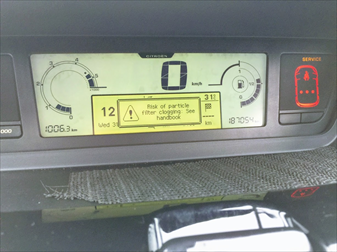
According to the customer, the warning about the saturated filter occurs intermittently and very irregular intervals. He was uncertain bud had a feeling that the warning appeared in the last few cases after downshifting. I applied the customers "feeling" during my test drive and this worked out. I can now duplicate the warning message at any time I want. I just needed 69 km of driving.
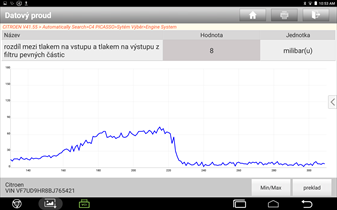
On particle filters, I use very frequently before a test drive this simple and excellent test. In the live data values, I just select one value so that the sampling speed is high as possible and I monitor the differential pressure sensor values in the filter at idle, 1 500, 2 000, 2 500 and 3 000 rpm. Here I was surprised that at lower RPM the differential pressure was within limits but at 3 000 RPM it jumped almost to twice the expected value. This started to correspond with the mentioned "downshifting" condition and I was quite eager to test this. The second issue that worried me is the visible saw teeth on the differential pressure sensor signal trace that for sure represent unwanted differential pressure sensor pulsations.
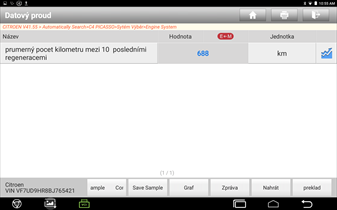
Nobody should start looking and working on an engine that is showing an average distance of 688 km between regenerations. The engine shouldn't be producing any excess smoke and must be capable of performing faultless passive regenerations. I haven't seen s regeneration yet (I will do this tomorrow) but I am convinced that this will go no problem whatsoever.
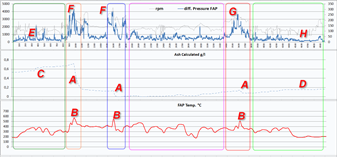
The precise explanation is in the archive in the complete story regarding this case, but I will try to explain this in short: The "B" represents the increased temperatures during downshifting that is accompanied with higher loads at the increased RPM and where the "A" represent the burning of soot during the so-called "passive regeneration" with a rapid decrease of the saturation of the filter (almost to zero). This occurs even that the last regeneration was 421 km ago! The blue trace at the top is showing the most important value and that is the FAP filter differential pressure. The "F" points are showing the critical high-pressure values for the engine ECU. The first "F" point can cause the activation of the warning message that the filter is over-saturated despite the fact that that the saturation value in a few minutes time is going to be almost at zero.
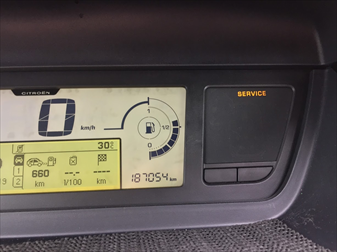
Due to the intermittent occurences of I am suspecting that there is a problem wit h the progresive exponential increase of the flow resistance through the particle filter I downshifted at 130 km/h from 6th gear to 4th gear and kept driving at this speed and slowly accelerated. As I suspected the warning message illuminated in a short while. Tomorrow I will add some extra documentation and the repair will be finished. The most probable cause is most probably going to be the actual particle filter. All the evidence is pointing in this direction.

The top graph with unwanted signal oscillations high as 70 mbar with no damper. The bottom graph trace with damper has only 2 mbar oscillations.
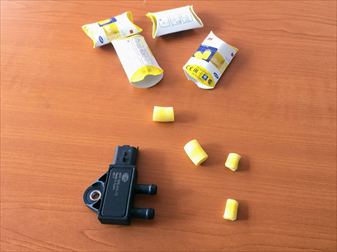
This Hella manufactured sensor is sending the exhaust system pulsations into the sensors voltage trace with pressure oscillation ranging up to 70 mbar, The engine ECU can evaluate these oscillations when the filter pressure is around 300 mbar as a problem (300 + 35 mbar). So the earplug working as a signal damper can reduce the value to 300 +2 mbar.
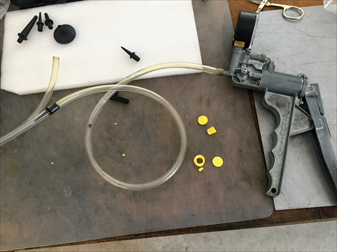
After cutting off both heat-treated ends the foam roll should be squeezed into a flat like tablets so that it can be cut out with scissors to a diameter slightly larger than the inlets into the differential pressure sensor. Now we install the created dampers into a hose and with a vacuum pump, we must test their damping level. When a value of 500 mbar is created the pressure should fade out within 2 to 3 seconds.
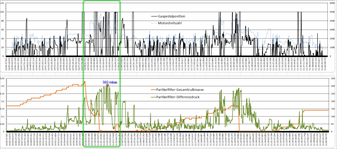
The pressure oscillation disappeared and the FAP filter values are similar (because the filter is almost empty even after 600 km). The sensor signal trace doesn't contain the pulsations that went up to 70 mbar in some cases. With the damper installed the max. pulsation value is 2 mbar.
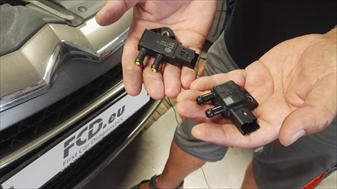
The owner brought with him the original differential sensor that was supposed to be defective. We tested this original sensor and discovered that it is working just fine and the replacement was unnecessary. Many car mechanics just replace components without doing any proper testing. In such cases, the newly installed Hella sensor will not be verified and will cause an untraceable bug for the majority of workshops. We don't understand how such components can be manufactured and sold as replacement parts.
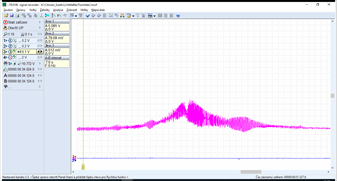
Voltage signal during acceleration where the Hella differential pressure sensor is transferring exhaust system pulsations into the signal. This SHOULDN'T BE THE CASE! Furthermore, the Hella sensor is giving higher pressure values in the range of 50 to 70 mbar when the engine is under load compared to the original Citroen part supplied by DELPHI.
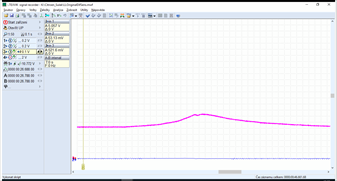
The sensors voltage trace during acceleration: signal without any oscillations. The actual sensor is filtering out all the exhaust system pressure pulsations. The original DELPHI sensor was reinstalled instead of the HELLA sensor and the car is working correctly.
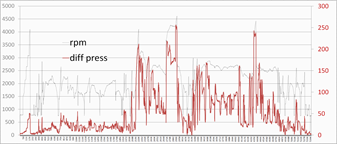
The original DELPHI sensor was reinstalled and everything is working fine. The HELLA sensor clearly is not working as it should and the engine ECU is not happy with this. The majority of mechanics would say that the sensor is brand new so the problem has to be elsewhere and from this point the car repair story has no end.
Kompletní informace na toto téma
a mnoho dalších informací najdete pod odkazy níže.
Vyzkoušejte si nás nezávazně na 14 dní zdarma.
Vyzkoušet 14 dní zdarma
Komentáře (0)
Vložit soubor